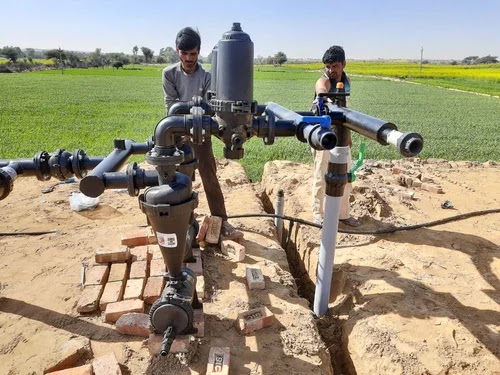Saudi Arabia, a country known for its vast desert landscapes and arid climate, has made significant strides in transforming its barren lands into productive agricultural areas. The key to this transformation lies in advanced irrigation systems designed to maximize water efficiency and ensure sustainable farming practices. This article explores the intricacies of irrigation installation in Saudi Arabia, highlighting the technologies and methods that underpin the country's agricultural success.
Historical Context
Traditionally, Saudi Arabia relied on ancient irrigation methods such as qanats (underground channels) and falaj systems, which harnessed groundwater for agriculture. However, with the advent of modern technology and the growing need for food security, the country has adopted more advanced irrigation techniques.
Modern Irrigation Techniques
Center Pivot Irrigation: Center pivot systems are widely used in Saudi Arabia's large-scale farms. These systems consist of a central pivot point with long arms that rotate, watering crops in a circular pattern. This method is highly efficient, reducing water wastage and ensuring even distribution across large areas.
Drip Irrigation: Drip irrigation is ideal for the country's arid environment as it delivers water directly to the plant roots through a network of valves, pipes, tubing, and emitters. This system minimizes evaporation and runoff, making it one of the most water-efficient methods available.
Sprinkler Irrigation: Sprinkler systems mimic natural rainfall by distributing water through a system of pipes and sprinklers. These systems are flexible and can be adapted to different crop types and field sizes, making them a popular choice among Saudi farmers.
Subsurface Irrigation: This advanced technique involves the installation of irrigation pipes below the soil surface, directly delivering water to the root zone. Subsurface irrigation significantly reduces evaporation and is particularly effective in conserving water in the harsh Saudi climate.
Implementation and Infrastructure
The installation of irrigation systems in Saudi Arabia involves several critical steps:
Site Assessment: Before installation, thorough site assessments are conducted to evaluate soil type, topography, and water availability. This ensures that the chosen irrigation method is suitable for the specific conditions of the farm.
System Design: Engineers design irrigation systems tailored to the unique needs of each farm. This includes calculating water requirements, designing efficient layouts, and selecting appropriate equipment.
Installation: Professional installation teams set up the irrigation infrastructure, ensuring that all components are correctly installed and connected. This phase also includes testing the system to ensure optimal performance.
Maintenance and Training: Regular maintenance is essential to keep irrigation systems functioning efficiently. Additionally, farmers receive training on system operation and maintenance to ensure long-term sustainability.
Government Initiatives and Support
The Saudi government has been instrumental in promoting advanced irrigation techniques through various initiatives and support programs. Subsidies, grants, and technical assistance are provided to farmers to encourage the adoption of efficient irrigation systems. These efforts are part of the broader Vision 2030 plan, which aims to diversify the economy and enhance food security.
Challenges and Future Prospects
While significant progress has been made, Saudi Arabia still faces challenges in irrigation, including water scarcity, high installation costs, and the need for continuous technological innovation. However, ongoing research and development efforts are focused on improving irrigation efficiency and sustainability.
In conclusion, irrigation installation in Saudi Arabia is a crucial component of the country's agricultural strategy. Through the adoption of advanced irrigation techniques and supportive government policies, Saudi Arabia continues to make strides in transforming its arid landscapes into productive agricultural hubs, ensuring food security and economic diversification for the future.

Comments
Post a Comment